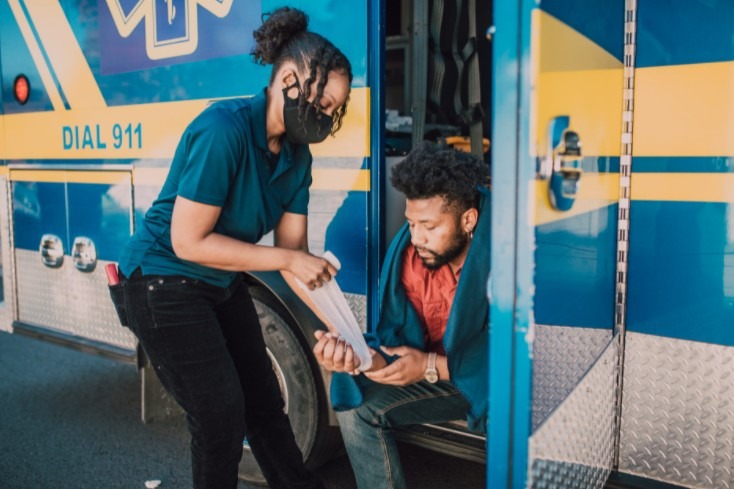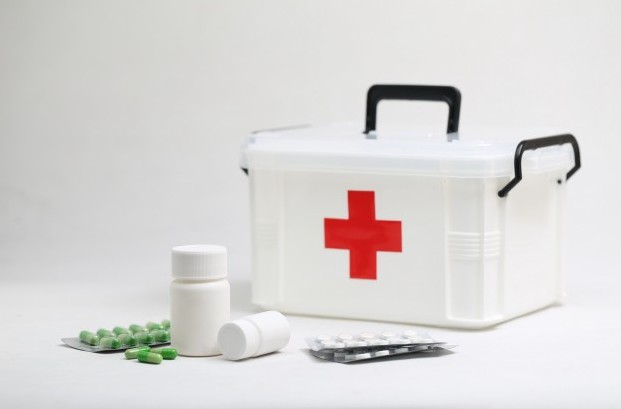Accidents can occur anytime and anywhere. So we all should know some life-saving skills that not only get ourselves out of danger but others as well. Everyone should have first aid kits in their homes.
Many people neglect the importance of first aid kits and training. All of us do not need to be medical professionals to treat injuries. Knowledge of first aid basics is more than enough to save a life until the paramedics arrive to provide professional medical attention. Let us look at some basic first aid procedures everyone should know!
First Aid Procedures for Emergencies
Medical emergencies can take an individual’s life or harm one’s body immensely. Hence, call the emergency hotline for an ambulance as soon as possible. Keep the first responder on call if you need information for what to do next to keep the person alive till the help arrives. However, you should not leave the person suffering alone. If the patient’s condition is critical, act fast and perform the following protocols:
1. Asthmatic Attack
If you see someone losing breath, clear away any obstruction that may be present in their mouth or blocking their airways. Get them out of any tight clothing to loosen up their body, allowing them to take deep breaths. Give the patient medication prescribed by their doctor for shortness of breath. Provide the patient with an inhaler to bring their breathing pattern on track, if you can.
Perform CPR if the patient starts to lose the flow of air in their lungs. Steps to perform cardiopulmonary resuscitation:
- Lay down the patient on a firm surface. Make sure their back is straight.
- Place your hand on the center of their chest. Use your other hand interlocking fingers with the first hand. Your fingers (of your first hand) should not be touching the victim’s body. Make sure to straighten out your arms while pumping, as it will prevent them from bending.
- Start Chest compression. Push the chest 2 inches deep. After each pump, release the pressure without moving around your interlocked hands. Give 35 to 100 chest compressions, depending on the severity of the situation. Let the chest recoil before going in for the next pump.
- To restart the breathing process, provide artificial breathing. Tilt the patient’s head while lifting their chin. Open their mouth and breath into it until you see the cycle of rising and dropping of their chest. Pinch the bridge of the nose for the breaths go straight to their lungs and not escape through the nose.
- Repeat the procedure if the individual is already having trouble breathing. Continue to compress their chest and administer CPR before assistance arrives.
2. Heart Attack
If someone has continuous severe chest pain, discomfort in legs, arms, and shoulders, lightheadedness, excessive sweating, and severe upper abdominal pain, most probably they are suffering from a heart attack. Provide the patient with aspirin to chew and swallow. Aspirin can be a lifesaver as it prevents our blood from thickening and forming clots. If you are allergic to aspirin, then take nitroglycerin. If the person gets unconscious and loses the ability to breathe, perform CPR.
3. Wounds
When someone has deep wounds on their body, the main concern is to stop the rapid loss of blood. Add pressure to the cut with a clean cloth to avoid bleeding. Do not be afraid or hesitant to apply hard pressure on the wounds. Try to keep everything sanitary. It includes keeping the dirt, germs, or debris out of the cuts for low chances of an infection.
Clean the wound by running clean water on it for a few minutes to get out any debris. Soak cotton pads with antibacterial solutions to gently wipe away bacteria. Remove blood-soaked clothes off of the victim and cover the wound with dry clean clothes. Keep a watch over the tears until the paramedics arrive.
4. Broken Bones
If one experiences blunt trauma to their body, bone fractures are highly possible. Bones get shattered into tiny pieces or get separated from their joints. If one experiences such injury, place them on a hard, smooth surface. Determine that they are as relaxed as possible. If the individual is bleeding, the first goal should be to apply some pressure to the area to stop the bleeding. Do not let them move as it can cause intense pain, and the movement of the broken bones can damage your muscles and tissue and even cause internal bleeding. If a bone is sticking out of the skin, do not push it back in.
5. Intense Burns
Watching an accident where the victim is burned or might catch fire is rare but, seeing such an occurrence and acting according to its emergence requirements is demanding.
There are, however, options for dealing with such a situation. If you can find a thick blanket, wrap it around the burning victim to put out the flames. Clothes that occur burned can be replaced and washed with warm water.
Avoid exposing the wounds to ice or freezing weather. It will exacerbate the harm done to the open burn wounds by causing painful blisters. To relieve discomfort, apply ointments to the burnt spot. People also should undergo an anti-inflammatories prescription.
6. Electrical Shock
It is very tricky to give an electrocuted individual first aid.
The first step is always to turn off the source of electricity and separate the person away from it with the help of non-conducting items. Avoid any physical touch with the electrocuted person. Cover them with a blanket to maintain warmth in their body. Try to treat burns if the first responder is instructing you to do so.
First Aid Procedures for Non-Emergencies
It does not have to be a life-threatening scenario for you to get first aid. Whether it is an emergency or not, you should always be health conscious. Minor injuries also require attention. Neglecting injuries or body conditions just on the basis that they are: minor can worsen your condition. To keep your health and safety under control, perform the following first aid procedures.
- Cuts and Bleeding
Wash your wound with soap and water. If bleeding, apply pressure to stop the blood, then put on a bandage over the wound to cover it from bacteria or dirt after sterilizing it with some saline solution.
- Minor Burns
Rinse the burn with lukewarm water and apply ointment for burns or, you can even put on aloe vera or petroleum jelly. Never put ice or even cold water on your burns as it can cause blisters. Apply a bandage over the burn to save it from pressure.
- Allergies
Allergies can be mild and can live treated with the help of Benadryl on your first aid kit. But do consult your doctor to get more information about what you are allergic to and its severity. Prevent the entity which causes allergies in your body. But if your allergic reaction is severe, use an EpiPen as soon as possible and seek immediate medical attention.
- Headache
There are different types of the severity of pain when it comes to headaches. If your pain has just started taking a painkiller, do not wait for it to go away because the chances are that it will get worse. Try taking liquid pain relievers as it does the job quickly. Properly hydrate yourself and lay down with dim lights or in the dark. Beaming lights can irritate our eyes thus, causing a headache. If your headache is not going away and getting worse over time, consult your doctor.
- The Sprained Ankle or The Knee
Walking in a fury, running, or falling during a sports match can cause sprains in the knees or ankles. Drop all activity if you have fatigued your ankle. To reduce the swelling, apply an ice pack to the injured spot. Use an ice pack multiple times whenever you notice any swelling. Try to walk or do any activity as little as you can until you exist properly, healed. To create an artificial elasticity area, you can use an ankle or knee brace or elastic bandage.
- Easing a Pulled Muscle
When you pull a muscle, immediately stop moving that part of your body. Moving or trying to stretch out can make the pain even worse. Put an ice pack over the pulled muscles until you feel relieved of your pain.
Apply compression to the region to avoid swelling and delay the healing process. Repeat these measures until the extreme wave-like pain subsides. To regain elasticity, begin slowly and gently elevating your body.
Bottomline
The articles cover detailed procedures that can help you in your daily routine for an emergency. Stay alert and take action as fast as you can when it comes to medical care. You can do so by preparing a medical aid kit for you which keeps essential elements for survival. Keep attaining as many first aid skills as you because there are many reasons which show how crucial it is to learn them.



